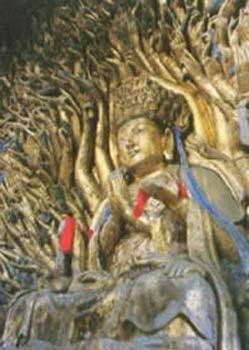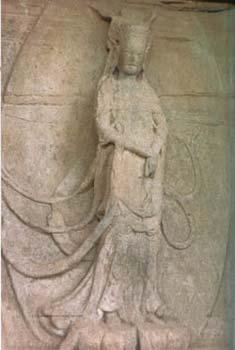Source:
12-09-2008 15:19
The Dazu stone carvings at Chongqing are one of ancient China's most valuable treasures. They were declared a National Key Cultural Relics Protected Unit in 1961, and in 1999 they were listed as a World Culture Heritage Site.
 |
| A thousand-hand Guanyin Bodhisattva statue on Baoding Mountain in Dazu. |
These carvings are distributed over 41 places in Dazu County, Sichuan. Some 50,000 carvings were begun in 892 AD and carved in the ensuing Five Dynasties and Northern and Southern Song, or over a span of some 250 years.
In addition to Buddhist and Daoist art, there are also Buddhist, Daoist, and Confucian statues that stand together in one grotto of which the 'Mizong' or Tantric (esoteric) Buddhist statues predominate. The largest concentration and largest scale of carvings are at Baoding and Beishan.
The Baoding carvings are to the northeast of Dazu City, amongst beautiful mountains. Buddhist disciples have traditionally brought incense to the sacred place and there is a saying 'look up towards Emei, look down towards Baoding.'
The Song-dynasty Emperor Zhao Zhifeng was the instigator of the many Buddhist carvings in this region. Some thirteen places on the mountains hold around ten thousand sculptures that were accomplished over seventy years, from 1179 to 1249. The largest in scale are the Great Buddha Bay and the Small Buddha Bay.
 |
| A Guanxin in charing manner |
In addition to displaying Song?dynasty sculptural art, these are of interest for their narrative appeal: they tell about the birth of Buddha, about the nature of change, about heaven, hell, cause and effect, and especially about people. Normal people, including farmers, are shown working in the carvings, also singing and dancing, drinking wine, pursuing the various tasks of daily life.
Editor:Yang Jie
